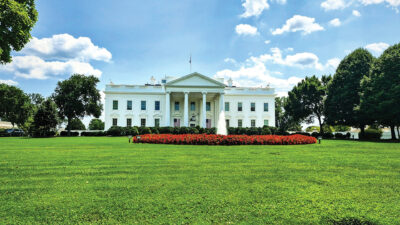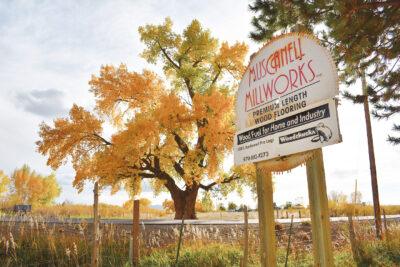
Editor
Some diverse market reports have emerged from the Southeast that host complaints about rising costs.
In Alabama, a lumber representative said that the market in his area is “still pretty busy. Commodities are obviously dropping in price but we’re still steady.” He said he can’t “pinpoint exactly why we’re still busy but there’s a lot of building going on.” Compared to six months ago, he said “it’s about the same.”
They offer Fir, Cypress, Cedar, Redwood, Spruce and Pine in “1-inch all the way through 12-inch when it comes to Cedars like timbers in thickness. So, we keep pretty much everything. We do No. 2D and C. Common and we keep the No. 2 all the way up through clears.” As for their best seller, he explained, “Pine is always going to be the best in the Southeast just because it’s predominant in this area.”
They sell to retail lumber yards and “import European Spruce. We bring in a lot of Chinese Fir. We don’t do much exporting. Our customers are all saying the same things- everybody is just busy,” he added.
“I’m aware of it but I don’t get into the weeds,” was his response about the proposed tariffs. He also added that, “I can’t control what they’re going to do. We’re going to continue our business with whatever they decide. Our costs have certainly gone up substantially in general, not just with our labor force. So, it negatively affects us as far as our bottom line. We have to increase our prices but other than that, it’s just business as usual.”
A lumber source in Mississippi reported the market in his area is “pretty slow,” has been “like that for a couple of months” and is worse than six months ago.
They primarily handle 2×4, 2×6 and all grades in Southern Yellow Pine.
Their customer base consists of pallet manufacturers. Like him, his customers have observed the slow down.
A lumber spokesman in Georgia has a slightly more positive view on his market. “I would say that it’s been better but it’s also been worse. We do hope that things are picking up and heading in the right direction,” he said. His reasoning for this improvement is from a standpoint of “pricing and ability to move products.” It is better than six months ago.
Offering Southern Yellow Pine in 2×6, MSR and DSS in addition to No. 1 Common, they sell to lumber yards, treaters and truss and component manufacturers. They also have a few international clients. “Overall,” he said, “everybody is down compared to Covid rates but hopeful. I hope that it returns to the way it was pre-Covid.”
Regarding potential tariffs, he said, “The tariffs going on Chinese goods coming into the United States, which was reciprocated during the last trade war, had a negative effect in the short term for our products going over there. Long term, it caused some of the manufacturers in China to leave and go to Southeast Asia so it kind of helped the customers mix into other countries.” He also listed a few problems that his business is enduring. “There’s always a bunch of negative things but labor, transportation, logistics and log costs have been too high,” he commented.
Further South in Louisiana, a lumber spokesman explained the market in his region, “Softwood is incredibly soft. I’m told that what’s putting downward pressure on the prices is domestic demand. We’re an exporter so all the softwood I buy goes offshore. We did sell softwood into 52 countries in 2023. We are seeing markets soften. Europe remained soft in 2024. We had a little bit of a run in April and May and then it cooled back off. The Caribbean has been a little bit better than the other markets but it’s still off about 30 percent from previous years.”
It’s worse than six months ago because “the market prices are lower, which has put additional pressure on everybody, including us. We’re also seeing less volume being used in offshore markets we handle. A lot of that has to do with a strong dollar. The United States dollar is strong compared to a lot of foreign currencies and it’s continued to gain strength,” he added.
95 percent of their product is Southern Yellow Pine, which is their best-seller. They also sell “a little bit of EWP and Doug Fir. We sell everything from 4-side, clear, rough lumber to 2-foot trims. Literally, the full gamut of every grade. Because of the diversity of our markets, I always jokingly say that we sell from the SAPS to the craps,” he noted.
A lot of his customers are manufacturers and as he said, “whether that is flooring, doors, cabinets or caskets, we also sell to a lot of distribution companies that are overseas. We just had our global sales call, where we have our salespeople from all over the world and that was concerning. Usually, we’ll see slowdowns from the sales team in Asia. It’s usually not slow everywhere at the same time. Right now, I’ve seen it reflected in the sales numbers every week but also heard it from each individual team member. They were talking with our clients and most of them were saying ‘we don’t have any orders for lumber.’ The softness is not just in North America and I can tell from our sales numbers that North America is performing much better than most of the global markets.”
His “official stance” on tariffs is “most of what we’re seeing is posturing. They’re using that against Mexico and Canada because they’re trying to make them abide by the rules of the trade agreements we already have and to help with immigration. I think that China is a much bigger, systemic problem. While I don’t disagree with the nature of the tariff, or the reason behind it, I do think it could be damaging- at least in the short run for pricing and that’s what concerns me. It’s not going to help global relationships at all. China has become one of the big users of Southern Yellow Pine and when that lumber stops going there, it’ll have to be moved to the other markets. So, in the short run, it will probably push prices into further contraction. I don’t see the way that it doesn’t.”
As for other issues his business has encountered recently, he said, “labor became a big issue for our producers, our sawmills and for us at our hardwood mill during Covid. It costs about 30 percent more for labor now. The costs of things like health insurance and energy and all of that have increased dramatically and that’s what’s causing part of the squeeze now. Log prices haven’t really moved but the other prices have increased. We’re basically back below to pre-Covid levels. While those levels were sustainable at that time, now because of the increase in costs, they are no longer sustainable. The earnings reports now have a red number in the left-hand corner and we’re seeing that in ours because even in softwood, while we are not the producer, we make a percentage of profit on what we sell. For example, when the lumber gets this cheap, we can sell a load of 2×6, 16 No. 2 Common and if we’re making five percent on it, we wouldn’t make but 65 dollars. How are we going to pay our staff, when we’re making 65 dollars on a load of lumber for heaven’s sake?”









